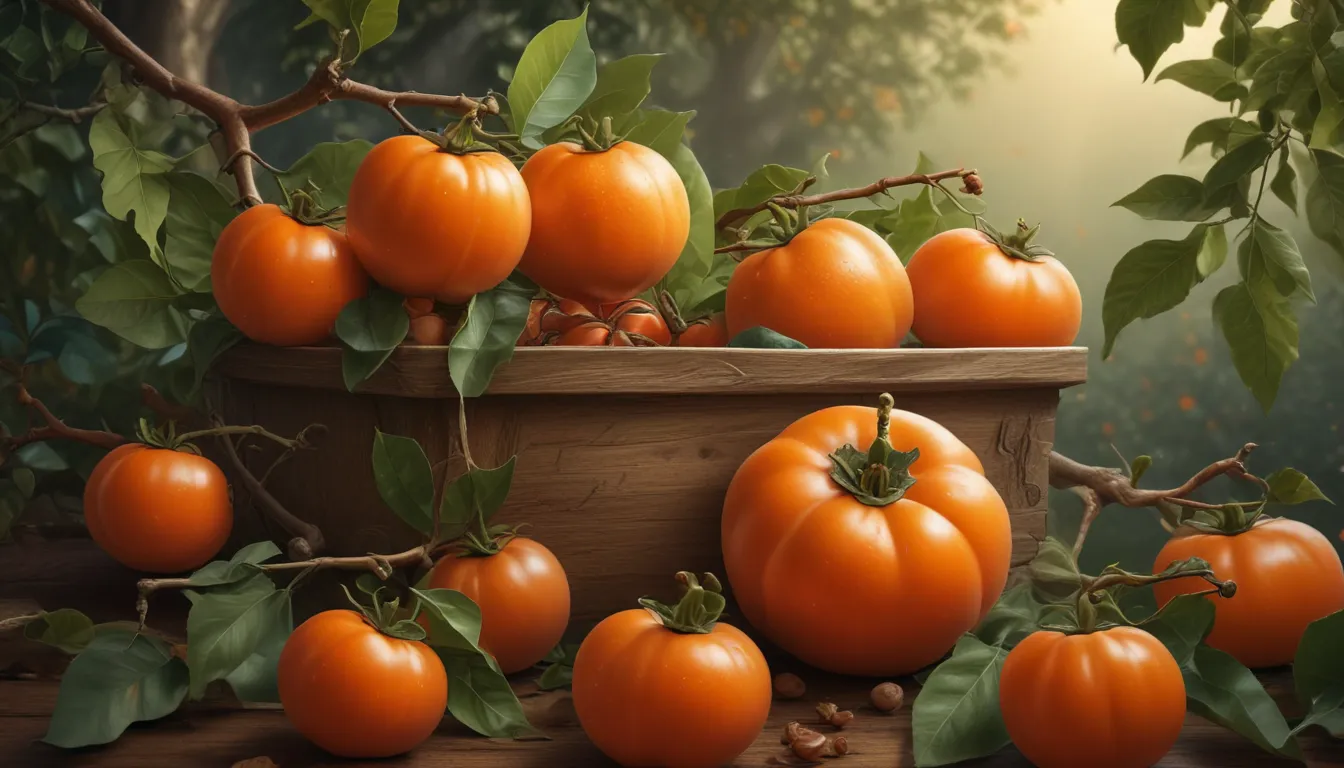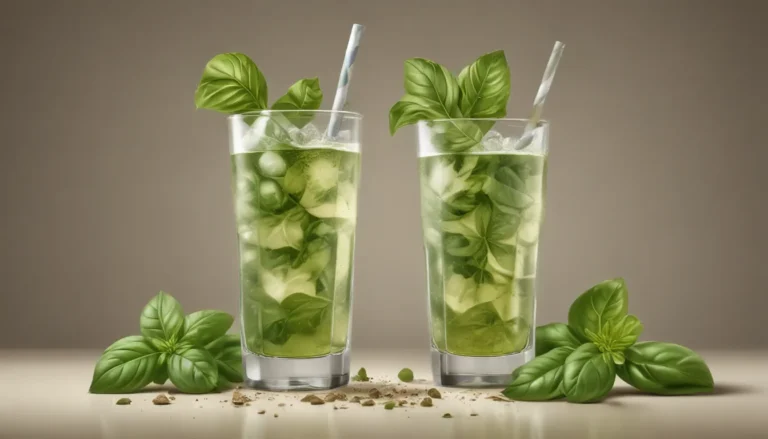The pictures in our articles might not always show exactly what the text is talking about. We use these images to make the article more interesting and eye-catching. They are there to add to the text, but not to replace it or show every detail.
Welcome to the vibrant world of persimmons! These delicious and nutritious fruits may not be as widely known as some others, but they offer a unique flavor and a plethora of health benefits. Persimmons, with their vibrant orange color, can be enjoyed in a variety of ways, from snacking on them raw to incorporating them into your favorite recipes. In this article, we will delve into 16 fascinating facts about persimmons, exploring their origins, nutritional value, and culinary uses. Let's dive into the world of persimmons and discover why these fruits are worth trying!
Key Takeaways:
- Persimmons are a delicious and nutritious fruit that comes in different varieties and are packed with vitamins and antioxidants, making them a healthy snack option.
- These sweet fruits have a unique flavor and can be enjoyed in various ways, from raw snacking to cooking and even drying to make traditional delicacies.
Persimmons: A Sweet and Nutritious Fruit
Persimmons belong to the Ebenaceae family and come in different varieties, including the popular Fuyu and Hachiya types. Originating in East Asia, particularly in China, Japan, and Korea, persimmons have a rich cultural significance in these regions. The Latin word "Diospyros," meaning "divine fruit," perfectly captures the delectable taste of persimmons.
Nutrient-Rich and Versatile
Persimmons are packed with essential nutrients like vitamins A, C, and E, as well as dietary fiber. They are also high in antioxidants, which help protect the body against cellular damage and reduce the risk of chronic diseases. There are two main types of persimmons: the round Fuyu variety, which can be eaten while crispy like an apple, and the acorn-shaped Hachiya variety, which requires ripening until it turns soft and jelly-like in texture.
Taste and Culinary Uses
One of the most appealing aspects of persimmons is their unique flavor profile. They have a sweet and slightly tangy taste with hints of apricot and honey, making them a delightful treat for the taste buds. Persimmons can be enjoyed raw, added to salads, used in desserts, or even made into jams and sauces. When picking persimmons, look for fruits that are firm but give slightly when gently pressed. The ripening process transforms persimmons from green to orange, indicating when they are ready to eat.
Symbolism and Traditional Uses
In addition to their culinary uses, persimmons hold symbolic significance in various cultures. In Japan, they are often seen as a symbol of good luck and are given as gifts during the New Year. Persimmons can also be dried to make hoshigaki, a traditional Japanese delicacy where the fruits are peeled, dried, and massaged daily to create a unique texture and flavor.
Health Benefits and Harvest Season
Persimmons are believed to have numerous health benefits, such as aiding digestion, supporting cardiovascular health, and boosting the immune system. With their high water content and low calorie count, persimmons make a guilt-free snack option that keeps you hydrated and refreshed. Fresh persimmons are harvested in the fall, typically from late September to early December, depending on the region.
Exploring the Culinary World of Persimmons
From ancient China to modern-day kitchens worldwide, persimmons have garnered popularity for their unique taste and health benefits. Whether enjoyed fresh, dried, or incorporated into various recipes, persimmons offer a bounty of nutrients that promote overall well-being. Rich in vitamins A and C, fiber, and antioxidants, persimmons contribute to healthy skin, boost the immune system, aid digestion, and reduce inflammation.
FAQs About Persimmons
- What is a persimmon?
-
A persimmon is a fruit originating from Asia known for its vibrant orange color and sweet-tart flavor.
-
Are persimmons good for you?
-
Absolutely! Persimmons are packed with vitamins, fiber, and antioxidants that contribute to overall health and well-being.
-
How do you pick a ripe persimmon?
-
Look for a fruit that is soft to the touch and has a deep orange color, avoiding ones that feel firm or have a greenish hue.
-
How can I eat persimmons?
-
Persimmons can be enjoyed fresh, sliced in salads, blended in smoothies, baked into pies, or made into jams and jellies.
-
Are there different types of persimmons?
- Yes, there are various varieties of persimmons, including fuyu and hachiya types, each with distinct characteristics.
Embrace the Flavorful World of Persimmons
Persimmons offer a delightful blend of taste and nutrition, making them a must-try fruit for any food enthusiast. Their versatility in recipes, from salads to pies and beyond, allows for endless culinary creations. Whether you're looking to boost your health or simply savor a delicious treat, persimmons are a fantastic addition to your diet. So, the next time you encounter these vibrant orange fruits, be sure to indulge in their unique flavor while reaping the myriad benefits they have to offer. Happy exploring!
Shop our collection of fresh persimmons today and embark on a flavorful culinary journey with these remarkable fruits.
Was this page helpful?
Our goal is to provide you with engaging and accurate content to enhance your knowledge and enjoyment of various topics. Each fact shared on our site is contributed by real users like you, ensuring diverse insights and information. Our dedicated editors rigorously review each submission to guarantee the highest standards of accuracy and reliability. Trust in our commitment to quality and authenticity as you discover and learn with us.






